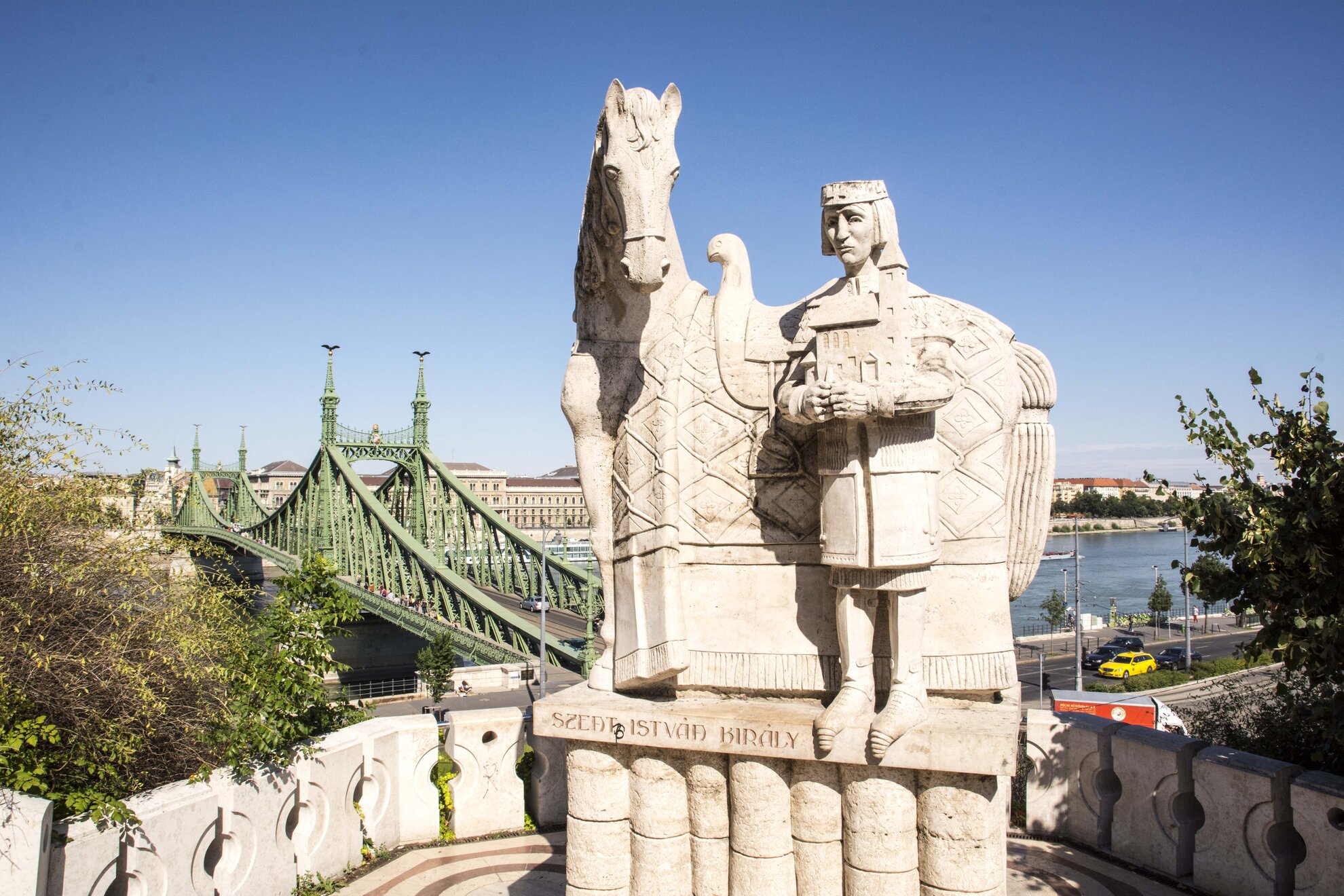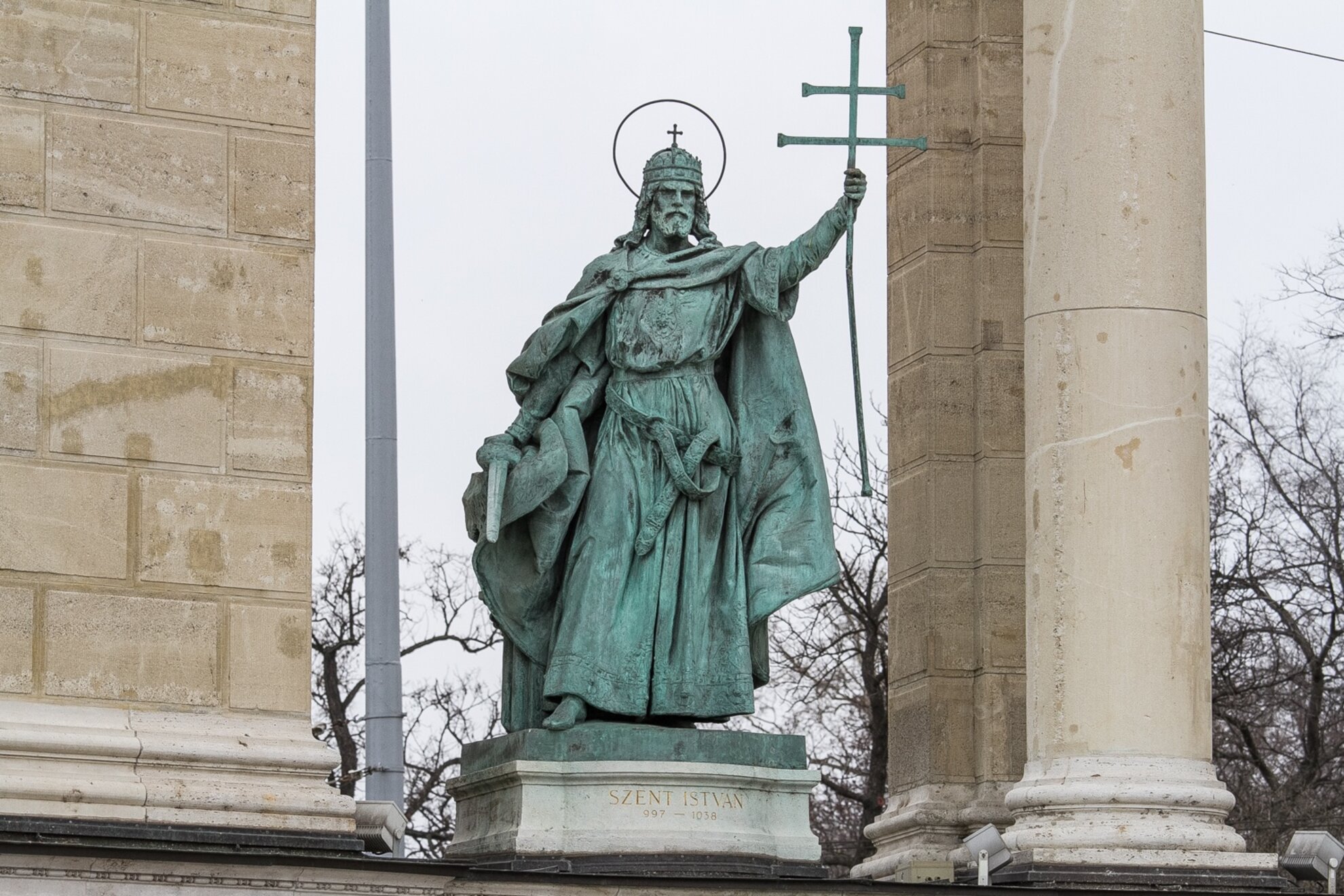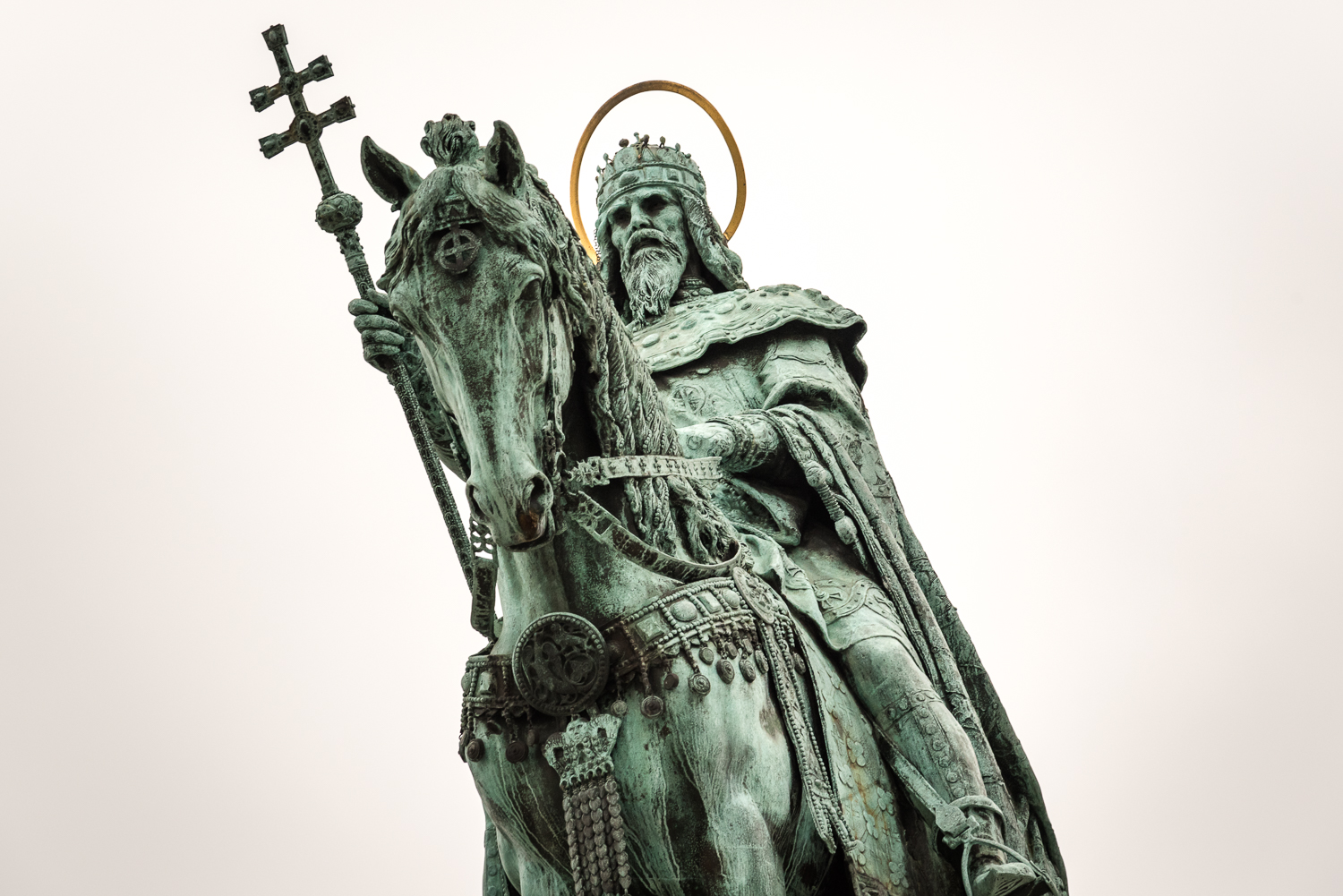One of Budapest’s most heavenly landmarks towers above its namesake square, bustling with locals and city visitors alike; a busy segment of the Grand Boulevard stretches from the gleaming Nyugati Railway Station to the majestic Margaret Bridge. These lively locations – along with many other public places and statues nationwide – all bear the name of St. Stephen, the Magyars’ most revered ruler, the founding king of the Hungarian state. In this first article of a new series, we provide background about this historic monarch and the local attractions that honor him a millennium after his era.
After defeating his pagan uncle Koppány in a decisive battle over the religious fate of a future nation, St. Stephen (“Szent István”) was crowned on Christmas Day of the year 1000 to become the first King of the Magyar state. As the country’s devout Christian leader, with the support of Pope Sylvester II, St. Stephen followed the footsteps of his father, Géza – the Grand Prince of the Hungarians – and used his reign to unite the Hungarian people as a Christian citizenry, a commitment that often involved fierce punishment to those who refused to accept the king’s faith. Nonetheless, St.
Stephen was in power over a relatively peaceful and prosperous period of 40 years; he was beatified soon after his death in 1038.

To commemorate the establishment of the Hungarian state, every August 20th a spectacular national holiday honors the Magyars’ founding king with joyful festivities and sparkling fireworks as the country celebrates its annual St. Stephen’s Day blowout. But it’s not only the cheerful celebration that serves to remind the populace of this esteemed sovereign – several major Budapest edifices, like the colossal St. Stephen’s Basilica, and a number of statues citywide, including the king’s graceful horseback depiction within Fishermen’s Bastion, are also named in honor of the powerful monarch.
Additionally, Hungary’s 10,000-forint banknote features an elegant graphic depiction of St. Stephen.
St. Stephen’s Basilica
Glorifying the city’s central landscape with its colossal dome and massive stone structure, this hallowed monument is one of Budapest’s most frequently visited landmarks. The elaborately ornate church houses the mummified Holy Right Hand of St. Stephen – the country’s most revered religious relic – alongside a rich collection of remarkable artworks and celestial stained-glass windows with biblical motifs. When the sound waves from the Basilica’s immense pipe organ hits visitors’ ears, they can feel the notes in their feet, in their chests, and in their souls.
St. Stephen’s Square
A man is standing with a rose in hand, expecting his long-awaited date; girlfriends chuckle over top-secret gossip; a hip skateboarder glides across the open space. These are all everyday scenes amid the city’s vibrant plaza, one of the most popular meeting spots for urban dwellers, lined by numerous high-class restaurants and some of Budapest’s hippest bars. Besides shaping the city’s nightlife scene, the St. Stephen’s Square is home to numerous events throughout the year, including a magical Advent Fair, and other occasional festivities.
St. Stephen’s Boulevard
As part of the Grand Boulevard – the city’s semicircular thoroughfare spanning from the Petőfi Bridge to the Margaret Bridge – this section named after St. Stephen starts at the Nyugati Railway Station’s lively road junction, passes by an alternate scenery of crumbling constructions and restored edifices, and leads past the impressive building of the Vígszínház (“Comedy Theater” in Hungarian), before running into panoramic views at the foot of the Margaret Bridge that marks the end of St. Stephen’s road segment at Jászai Mari Square.
St. Stephen’s Park
Flanked by the tree-shaded Pozsonyi Road on one side and the Danube on the other, this T-shaped park serves as an out-of-sight communal recreation ground, with great views over Margaret Island and the Buda Hills. When the first buds of spring arrive, the park becomes filled with life, hosting dog-walking grandmas, roller-skating teens, and pram-pushing mothers.
St. Stephen's Park is home to several historic statues and monuments, while the surrounding area boasts several Bauhaus-style buildings that hide some of Budapest’s first penthouse flats.

There are numerous other public structures that bear the venerated king’s name, like the united Szent István and Szent László Hospital in District IX on Nagyvárad Square, the Art Nouveau-style Szent István High School on Ajtósi Dürer sor, the unusual sculpture of an apparently youthful St. Stephen standing beside his horse near the entrance of the Cave Church on Gellért Hill, or his graceful memorial on Heroes’ Square that stands among many other statues of men whose lives had major impacts on Hungary’s history; naturally, St. Stephen’s sculpture holds a leading position among them.




